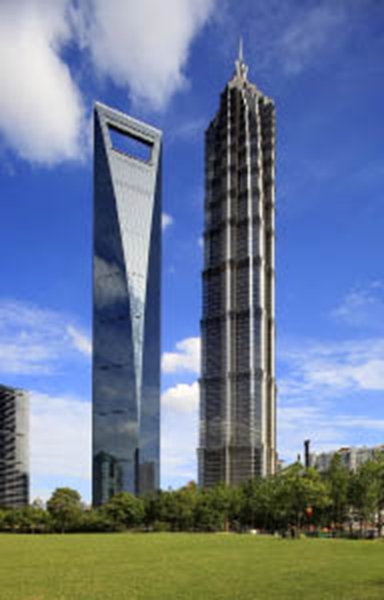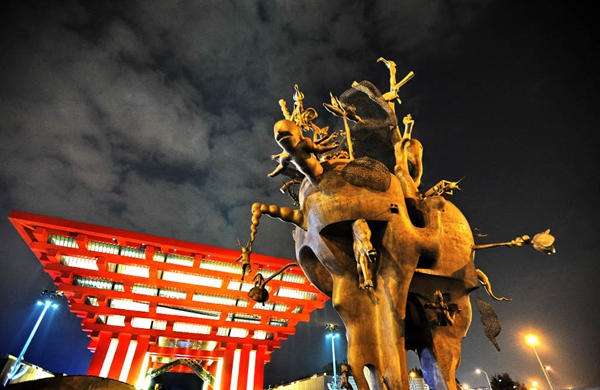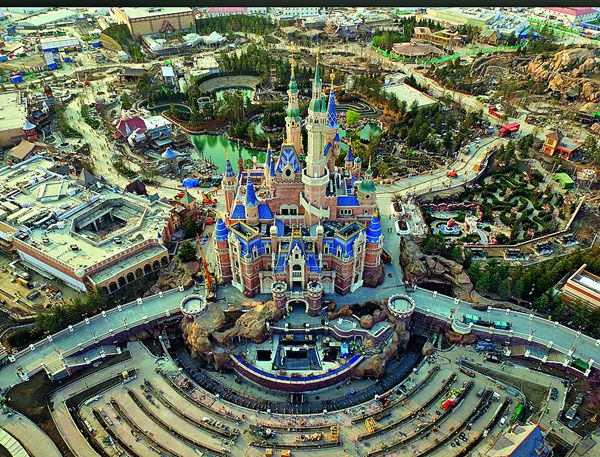Lujiazui Central Green
Surrounded by the Jinmao Tower, SWFC, and Oriental Pearl Tower, the Central Green is the heart of Lujiazui district. Visitors often take a bird’s-eye view of the city by taking a trip up to one of the area’s famous viewing points – the transparent observatory, which stands on the 259-meter-high Oriental Pearl Tower, the hall on the 56th floor of the Jinmao Tower, or the 97th floor of the SWFC. But the Central Green provides a different perspective to observe Lujiazui by looking up. Covering an area of 65,000 square meters, the Central Green is the largest open-air lawn in Shanghai. The lake in the center spreads out 8,600 square meters. In the entrance you will find a two-story house covered with black tiles. Built in the 1920s, the construction has been transformed into an exhibition hall to showcase Lujiazui’s development history. Though the structure was built in traditional Chinese style, the grey and red brick walls present a Western element. Several columns in the classical style of the West can be found in the compound as well.

Getting there: Take subway Line 2 to Lujiazui Station. Walk along Century Avenue for about 10 minutes.
Shanghai ExpoSite
Though the 2010 Shanghai World Expo has closed, several facilities and venues remain, such as the Expo Axis and Italy Pavilion. At the same time, the former China Pavilion is transformed into China Art Museum, and contains 27 exhibition halls on four floors. Nearly 10,000 collections cover different stages of China’s art development in the 20th century. Impressive installations include a digital animation of the famous Qingming Festival at the Riverside, a masterpiece of the Northern Song Dynasty (960-1127), and photos that reveal Shanghai life in different decades. The former Expo Culture Center has been revamped into the Mercedes-Benz Arena. The Saudi Arabia Pavilion has been renamed Moon Boat due to its unique appearance, and children enjoy the Chocolate Happy Land, renovated from the former pavilions of several African countries. It boasts the world’s biggest chocolate castle, fairytale candy world, and all kinds of cuisines.

Getting there: Take subway Line 8 to China Art Museum Station
Shanghai Disney Resort
The first Disney park on China’s mainland and the sixth in the world, Shanghai Disneyland features six themed scenanios including Mickey Avenue, Gardens of Imagination, Adventure Isle, Treasure Cove, Tomorrowland, and Fantasyland. Among the attractions, the TRON Lightcycle Power Run is the first of its kind in any of Disney theme parks around the world. A grand opening ceremony is expected on June 16, 2016. Tickets have been on sale since March 28 priced at RMB 499 per person during the opening days and peak days, and RMB 370 per person on off season days after the opening period.

Getting there: Take subway Line 11 or Line 2 (planning) to Disneyland.
(Compiled and edited by China Today)
